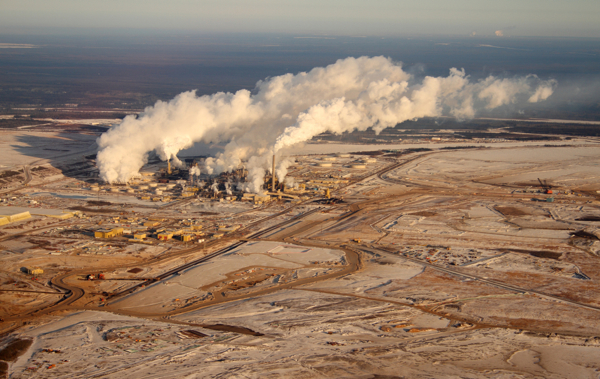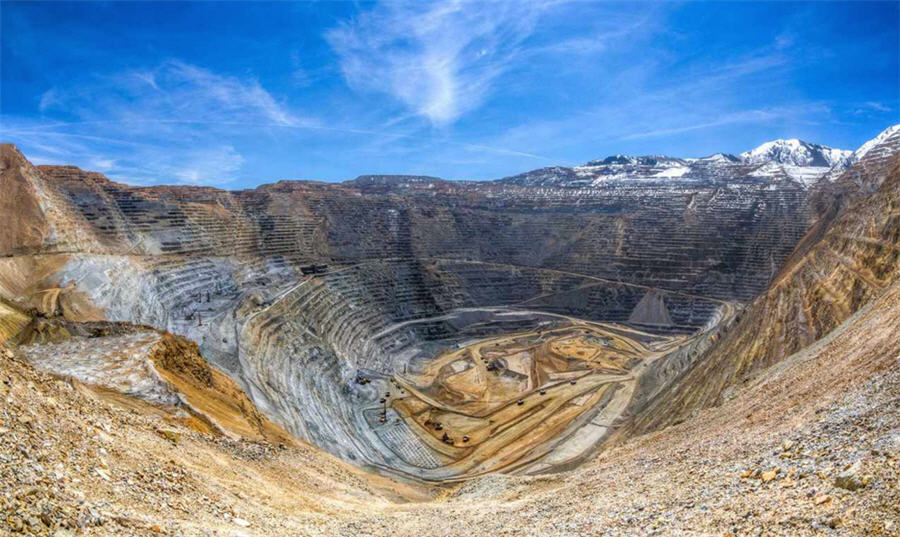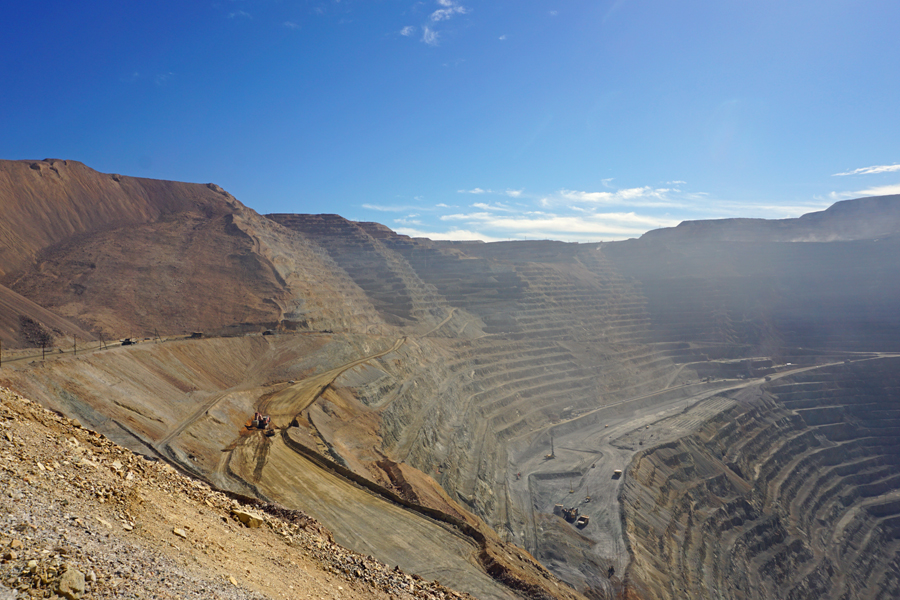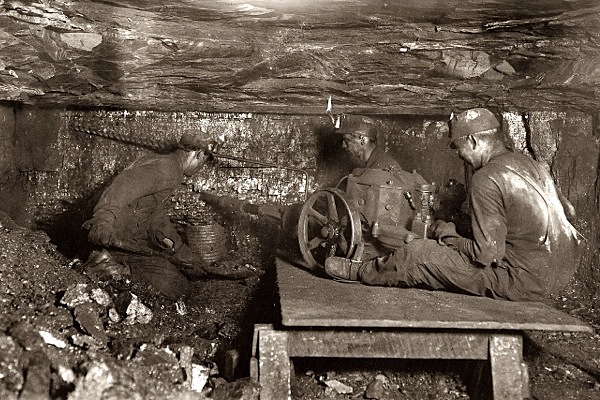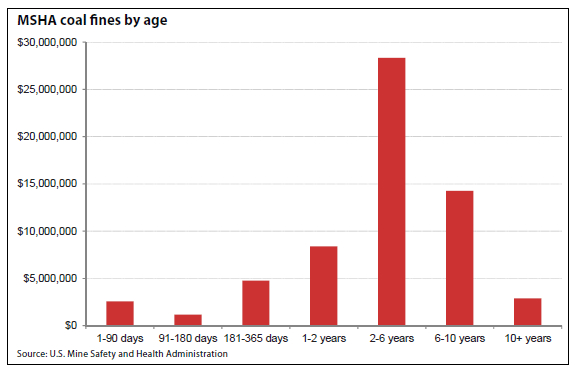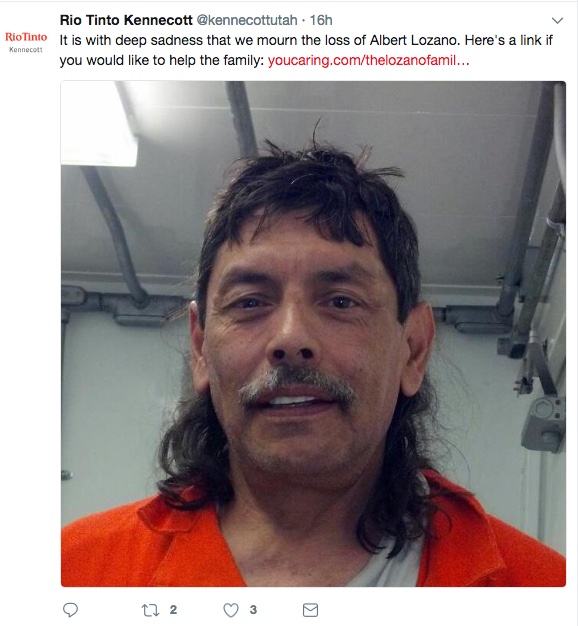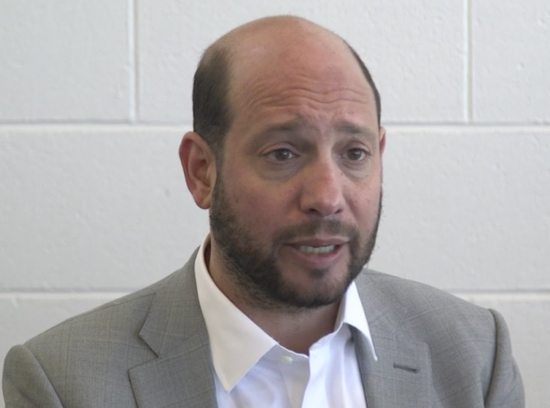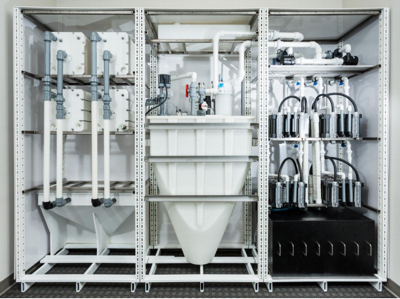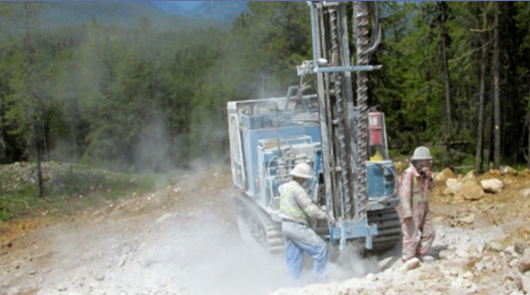The natural resources space has been difficult in recent years. Potash prices collapsed, uranium spot prices hit a nine-year low, the gas market was in glut. Only oil has stayed strong. But Peter Epstein of MockingJay Inc. has found some gems in the resource rubble, and foresees better times ahead. In this interview, Epstein tells The Energy Report who stands to capture the graphite market, how to catch the next wave in potash, and offers his thoughts on when investors might catch a break in the uranium market.
The Energy Report: Why are you excited about the oil and gas space right now?
Peter Epstein: Oil and gas is unique in that it hasn't budged when so many commodities have fallen precipitously in price. Coking coal prices, for example, are at multiyear lows. The iron ore price has fallen below $100/metric ton. The uranium spot price has fallen to a nine-year low. But oil prices have held in the $90–100/barrel ($90–100/bbl) range on West Texas Intermediate crude for three or four years, steady and strong. Natural gas prices collapsed in 2012 but have come back fairly strong, only recently giving back a bit of the gains. That's why I like oil and gas. It's a strong commodity. Even with all this talk about a slowdown in China, which causes lots of commodities to fall, oil and gas sticks in there.
TER: Oil, gas and mining industries are tarred with the same brush by environmental advocates, who describe them as dirty, polluting and environmentally destructive. Can these industries be made attractive to investors who put a premium on environmental considerations?
PE: Companies are learning the hard way that they have to have a social license to operate, as well as address the increasingly long list of permitting and environmental hurdles. Extractive industries that are dirty and polluting have to clean up their acts. But this is not a new problem; it's been going on for years—or even decades—depending on the jurisdiction.
Another negative impact for such companies is the longer time frame to production, created by a myriad of factors above and beyond environmental considerations. A longer time frame means more difficulty funding projects, and therefore a lower net present value. Project hurdle rates have to rise to account for the higher risks and longer time frames. This means that industry-wide cost curve increases and commodity prices have to rise in response. Margins will be squeezed somewhat, even if companies enjoy higher commodity prices in the long term.
TER: What do companies have to sacrifice to achieve environmental goals?
PE: Companies have to give up profits to meet these new realities. But companies that approach dirty and polluting industries in innovative ways, frequently with the use of technological advances, will be rewarded.
For example, American Sands Energy Corp. (AMSE:OTCBB) is trying to become one of the first U.S. companies to extract bitumen from oil sands. Located in Utah, the company proposes an entirely new approach—In fact, without this new approach, there's no chance that American Sands Energy could operate in the U.S. The company uses a proprietary solvent to separate the bitumen from the sand, but no water is used in the process. In arid eastern Utah, this is an extremely important factor. No water is required because the oil sands deposits in Utah are entirely different from those in Alberta, Canada. In Canada, the oil sands are a mixture of water, sand and bitumen. In Utah, the deposits only contain bitumen and sand—no water. American Sands Energy is a perfect example of a company that could be a winner by mitigating environmental factors.
"Companies that approach dirty and polluting industries in innovative ways, with the use of technological advances, will be rewarded."
Or take a company like Graphite One Resources Inc. (GPH:TSX.V), which has a project in Alaska. Everyone's heard about Tesla Motors Inc.'s (TSLA:NASDAQ) gigafactory, which will produce a large number of batteries for electric vehicles. Around the time of Tesla's big announcement in February, an outcry by certain groups contended that a large quantity of currently sourced graphite comes from dirty, polluting mines in China. This played a role in Tesla's announcing it would source the key materials for its batteries from North America. And Graphite One is one of only two U.S. graphite plays.
Graphite One has a massive graphite resource, of which a significantly sized portion can be mined at surface. The company plans to infill the mined areas to fully reclaim the disturbed areas. Graphite One is definitely worth watching. In fact, it is unique among graphite companies in that it has the opportunity to apply for a loan through a state of Alaska program. Alaska is mining-friendly, and will help ensure that prudent environmental standards are followed.
TER: Is there another graphite company that you like?
PE: Big North Graphite Corp. (NRT:TSX.V) is rehabilitating an existing, formerly operating facility in Mexico. I mention this as an example of something environmentalists like: a new company that comes in, starts up production, provides jobs and, more importantly, cleans up the whole mess when it's done. Right now, the mine is just an eyesore. It's damaged earth. Big North Graphite is going to reclaim the site in the end.
TER: What other companies are you excited about?
PE: Aroway Energy Inc. (ARW:TSX.V; ARWJF:OTCQX) has a heavy oil property in Saskatchewan, a light oil property in central Alberta and owns land in the Kerrobert area of west-central Saskatchewan. This story fascinates me because the company is 4–6 weeks away from drilling its Kerrobert area. Back in April, this stock was trading at CA$0.28, today it's at about CA$0.25. Yet the company is three months closer to potentially finding a blockbuster field. Located just 5–6 miles away, a private company called Caltex Resources Ltd. is producing a reported cumulative 4,000 barrels/day from dozens of wells. If Aroway hits in late August, the stock could double or triple in subsequent months.
TER: When uranium's price stalled around $35/pound ($35/lb), everyone bet it was about to rise again, because it couldn't go any lower. Then it stalled again, at about $28.50/lb. What will make uranium mining profitable and attractive again?
PE: For the first time since April, the spot price has a $3 handle on it, with Ux Consulting quoting it at $30/lb on Aug. 11. It appears that spot uranium may have bottomed at about $28/lb. If the spot price rebounds to even just $35/lb, that could be bullish for the sentiment of uranium juniors.
Let me point out that the spot price is not the same as the long-term price that most utilities contract at. Make no mistake, $28.50/lb was a nine-year low and a depressed price. Most uranium mines around the world can't do business at $28.50/lb—or at $35/lb. Many analysts believe the price at which new greenfield projects would get the green light is $60–75/lb. That might sound high, but in the months leading up to the terrible Fukushima disaster in March 2011, the long-term uranium price was steady at around $70/lb.
Globally, the cost per pound to produce uranium has not gone down over the past three years. All mining costs are generally increasing because of the factors we've discussed: permitting costs and time frames, environmental concerns, etc. The market needs a higher uranium price, and we will see a higher uranium price. It's a question of when, not if. Many pundits point to the restart of some Japanese reactors, all of which are currently offline. I agree that this will be a positive sentiment booster, but that alone will not be enough to move uranium prices by all that much, in my opinion.
"The market needs a higher uranium price, and we will see a higher uranium price. It's a question of when, not if."
Instead of focusing on Japan, the market should be watching China and India, both of which only generate 2–3% of their electricity from nuclear power. That has to change—and it will. Given their severe air pollution problems, the Chinese are going to build new reactors as fast as they can. They will also continue ramping up hydropower, wind, solar—you name it. But nuclear power generation in China is going to be a larger part of a growing pie. China is sitting on $2–3 trillion ($2–3T) in U.S. Treasuries, and it will happily buy hard assets in the form of uranium or uranium enrichment facilities. The Chinese are very active, up to a state-owned entity level, in terms of building nuclear power stations.
Some analysts point to in-situ recovery operations as potentially profitable. These have low costs and can be profitable at a uranium price of, say, $40–45/lb. But the size of these projects is typically too small to move the needle globally.
Finally, I would point out that utilities have not been contracting for long-term supplies of uranium since they feel no urgency to do so. That will have to change. Utilities can't wait until 2017 to contract 2018–2023 uranium supplies. As soon as next year, utilities will be back in the market and the long-term price of $45/lb will rise.
As a commodity that's hit a nine-year low, uranium is out of favor. A lot of the uranium stocks are oversold. But I think there are opportunities in small names.
TER: Some projections for nuclear power plant construction in China suggest that even with as much construction as it wants to do, the country still won't exceed 10% of its total power needs. Is that going to greatly increase uranium demand?
PE: China expects to start building something like six new reactors every year for the next five years, and that's going to keep ramping up. If your question is how long will it take to get 10% of its electricity from nuclear power, it could take 10–15 years. China thinks long term, and has a lot of U.S. dollars that it would like to transform into hard assets. And it's not just the Chinese who are actively going after uranium and nuclear power. It's Russia as well, and India.
By the way, both China and India are very active in building hydroelectric dams. But that kind of construction gets an unbelievable amount of scrutiny in terms of the environment, and the fact that tens or hundreds of thousands of people must be moved out of villages to build these dams. Hydroelectric development in China and India may come to a quicker end than people realize. Then, of course, you have coal. The World Bank, the International Monetary Fund, the U.S. and some other major international bodies are saying they're not going to fund Third World coal power plants anymore. Those factors all lead to more nuclear power development.
TER: Is there another company you'd like to mention?
PE: CBD Energy Ltd. (NASDAQ:CBDE) is interesting because, in addition to being a solar stock, the company also works with wind and energy management systems. It has over 17,000 (17K) installations, mostly in Australia, and is moving into the U.S. In Australia, 15% of homes have solar. In the U.S., it's estimated that 1% have solar. Even though it's extremely competitive in the U.S. for companies installing rooftop solar panels, the penetration of solar on rooftops of individual homes is still quite low.
CBD Energy is well funded. It has a strong management team and a long track record. In fact, it has licensed the "Westinghouse Solar" trademark to tell people who it is. It's a real brand name.
The exciting part of the story is that solar companies can trade at 10–30x revenues. But it's a very competitive, crowded space, and it's hard to tell if those kinds of multiples are fair, or if it's a bubble. In the case of CBD, however, you have a geographically diversified, fast-growing, small company that's trading at a 1x multiple of 2015 revenue.
TER: The potash space was shaken up in the last year by the collapse of the cartel in Russia. How is that affecting the potash space in North America today?
PE: Potash is a generic term that refers to a group of potassium-bearing minerals, naturally occurring potassium salts and the products produced from those salts. Potash is a plant's main source of potassium, and is used in fertilizers. For muriate of potash (MOP), prices collapsed after that event. It took a couple of months, but the potash price fell from more than $400/metric ton down to about $300/metric ton. Prices differ around the world, so I'm using a benchmark price that a lot of people refer to.
"The oil and gas space is unique in that it hasn't budged when so many commodities have fallen precipitously in price."
MOP is widely used in all types of farming, but it contains a chloride ion that can be detrimental to plant growth, especially fruits and vegetables. Sulfate of potash (SOP) is different. SOP improves yield, quality, taste and shelf life. These attributes are valuable to farmers, so SOP trades at a premium price to MOP.
SOP prices barely moved at all. It's almost like they're two different products. SOP is a specialty product with one-tenth the market of MOP. A third-party study commissioned by Potash Ridge Corp. (PRK:TSX; POTRF:OTCQX) suggests that demand for SOP would be 2–3 times greater if existing users could ensure security of supply, and if new users were introduced to SOP versus MOP. The premium of SOP over MOP has moved quite a bit because SOP prices were virtually unchanged during the Russian cartel turmoil, while MOP prices fell 25%.
You can make SOP, but you need MOP as a feedstock to start with. If you have to start with MOP and spend money to process it, the margin is not going to be that strong. Since it is an expensive process, not many companies do it. That's why the MOP market is 50M metric tons/year, and the SOP market is about 5 million tons.
Potash Ridge's Blawn Mountain project in Utah, on the other hand, will produce SOP by directly extracting it from mineral ores. By starting with SOP, which few companies in the pipeline have the ability to do, Potash Ridge has the competitive advantage of being able to offer a lower SOP price. The company has other advantages as well: It has a near-surface resource, and it's on state land, not on federal land, so there's no interaction with the U.S. Bureau of Land Management.
For MOP, in Saskatchewan alone, there's a huge amount of production. Plus, a number of juniors and both BHP Billiton Ltd. (BHP:NYSE; BHPLF:OTCPK) and Rio Tinto Plc (RIO:NYSE; RIO:ASX; RIO:LSE; RTPPF:OTCPK) have projects they could bring online.
TER: You have an extremely diverse portfolio of companies that you follow. Can you offer some advice for investors looking to build that kind of a portfolio for themselves?
PE: Investors in natural resources have not been happy campers for the last two or three years. I think it's important to stick with companies that have cash on their balance sheets. Stick to companies already in your portfolio, even if they're down 60–70%, with good management teams that are 100% committed to the company, not management teams involved with five different companies at once. And watch out for the cash burn of companies. You want the cash burn to be minimal, so that your companies can live to fight another day.
TER: Peter, I appreciate your time and your insights.
In 2011, CFA Peter Epstein left his senior analyst position at a $3B hedge fund and formed MockingJay Inc., a consultancy for companies in the natural resources space and an informal investment adviser to high-net-worth investors, family offices and funds. The company's mission is to increase awareness of select natural resource companies. Epstein's areas of expertise include uranium, coal, potash, gold and oil & gas. He has published hundreds of articles on investment sites such as Seeking Alpha, The Motley Fool and Au-Wire.com.
Want to read more Energy Report interviews like this? Sign up for our free e-newsletter, and you'll learn when new articles have been published. To see recent interviews with industry analysts and commentators, visit our Streetwise Interviews page.
DISCLOSURE:
1) Tom Armistead conducted this interview for Streetwise Reports LLC, publisher of The Gold Report, The Energy Report, The Life Sciences Report and The Mining Report, and provides services to Streetwise Reports as an independent contractor. He owns, or his family owns, shares of the following companies mentioned in this interview: None.
2) The following companies mentioned in the interview are sponsors of Streetwise Reports: Aroway Energy Inc., Uranerz Energy Corp. Streetwise Reports does not accept stock in exchange for its services.
3) Peter Epstein: I own, or my family owns, shares of the following companies mentioned in this interview: American Sands Energy Corp., Potash Ridge Corp., CBD Energy Ltd., Big North Graphite Corp., Aroway Energy Inc., Graphite One Resources Inc. I personally am, or my family is, paid by the following companies mentioned in this interview: None. My company has a financial relationship with the following companies mentioned in this interview: American Sands Energy Corp. I was not paid by Streetwise Reports for participating in this interview. Comments and opinions expressed are my own comments and opinions. I had the opportunity to review the interview for accuracy as of the date of the interview and am responsible for the content of the interview.
4) Interviews are edited for clarity. Streetwise Reports does not make editorial comments or change experts' statements without their consent.
5) The interview does not constitute investment advice. Each reader is encouraged to consult with his or her individual financial professional and any action a reader takes as a result of information presented here is his or her own responsibility. By opening this page, each reader accepts and agrees to Streetwise Reports' terms of use and full legal disclaimer.
6) From time to time, Streetwise Reports LLC and its directors, officers, employees or members of their families, as well as persons interviewed for articles and interviews on the site, may have a long or short position in securities mentioned. Directors, officers, employees or members of their families are prohibited from making purchases and/or sales of those securities in the open market or otherwise during the up-to-four-week interval from the time of the interview until after it publishes.

